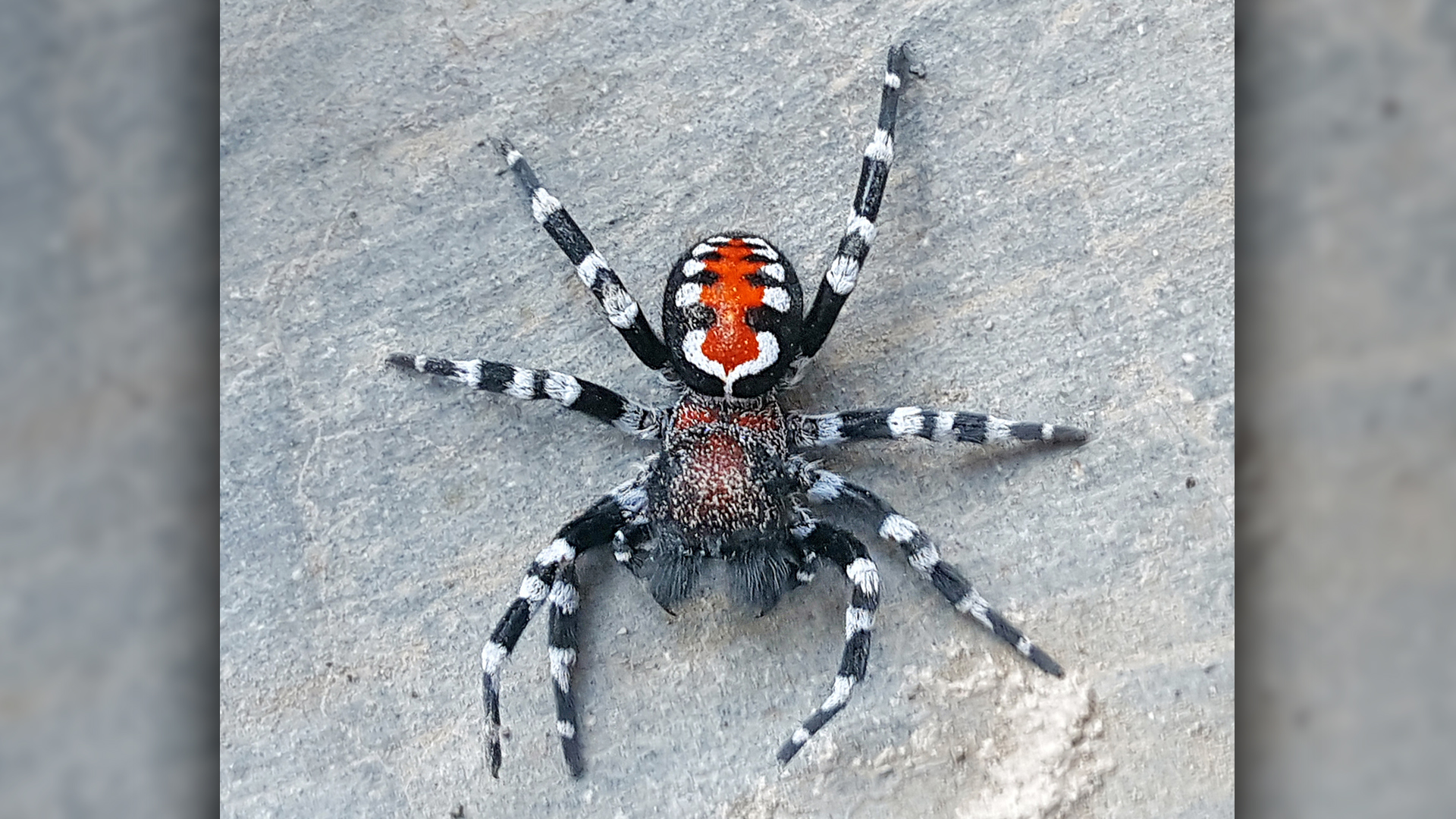Scientists discover spider wearing 'Joker' makeup, name it after Joaquin Phoenix
A striking pattern on the spider's back resembles the Joker's trademark grin.
A newfound spider species wears a striking red-and-white pattern on its back that resembles the grin worn by Batman's long-standing nemesis, the Joker. The resemblance is so uncanny that the researchers who described the arachnid named the species after actor Joaquin Phoenix, who portrayed the tormented, smiling villain in the 2019 film, "Joker."
Ironically, the colorful spider belongs to a genus that was named for the late punk rock icon Lou Reed, who famously wore black and rarely smiled.
Scientists discovered Loureedia phoenixi in Iran; it's the first Loureedia spider to be identified outside the Mediterranean region, they reported in a new study. The genus, first described in 2018, now includes four species.
Related: Incredible photos of peacock spiders
On the backs of the male L. phoenixi spiders, a splash of vivid red stands out against a background of white, much like the Joker's unnerving smile contrasts with his white facial makeup, the scientists wrote in the study. Though, you'd need magnification to see it clearly, as the spider's body measures only about 0.3 inches (8 millimeters) long and is covered in tiny hairs.
In fact, spiders in this family — Eresidae — are known as velvet spiders because they sport dense, velvety coats, said lead study author Alireza Zamani, an arachnologist and doctoral candidate in the Biodiversity Unit at the University of Turku in Finland. Velvet spiders are especially interesting to arachnologists because some have unusual habits, such as cooperating to build communal nests and collectively caring for their young, Zamani told Live Science in an email.
Discovering Loureedia spiders is challenging, because the arachnids are active aboveground only for a three-week period each year.
Get the world’s most fascinating discoveries delivered straight to your inbox.
"These spiders spend most of their lives in their subterranean nests," Zamani said. Males leave their burrows to hunt for females, "usually from late October to mid-November," and spiderlings come to the surface when they leave their mother's nest, he explained.

So far, scientists have collected and described only male Joker spiders. But the search will continue for the elusive females, targeting locations where males have been found.
"Ideally, if you have enough time and patience, it would be interesting to track
a wandering male. He should know how to find the female better than anyone else," Zamani said. "This way, you would also have the chance of observing and photographing the actual mating behavior, which has not been documented for any Loureedia species yet," he added.
The findings were published in the June issue of the journal Arthropoda Selecta.
- Weird and Wonderful: 9 Bizarre Spiders
- Creepy, crawly & incredible: Photos of spiders
- In photos: Fish-eating spiders around the world
Originally published on Live Science.
OFFER: Save 45% on 'How It Works' 'All About Space' and 'All About History'!
For a limited time, you can take out a digital subscription to any of our best-selling science magazines for just $2.38 per month, or 45% off the standard price for the first three months.

Mindy Weisberger is an editor at Scholastic and a former Live Science channel editor and senior writer. She has reported on general science, covering climate change, paleontology, biology and space. Mindy studied film at Columbia University; prior to Live Science she produced, wrote and directed media for the American Museum of Natural History in New York City. Her videos about dinosaurs, astrophysics, biodiversity and evolution appear in museums and science centers worldwide, earning awards such as the CINE Golden Eagle and the Communicator Award of Excellence. Her writing has also appeared in Scientific American, The Washington Post and How It Works. She is the author of the book "Rise of the Zombie Bugs: The Surprising Science of Parasitic Mind Control," published by Hopkins Press.

